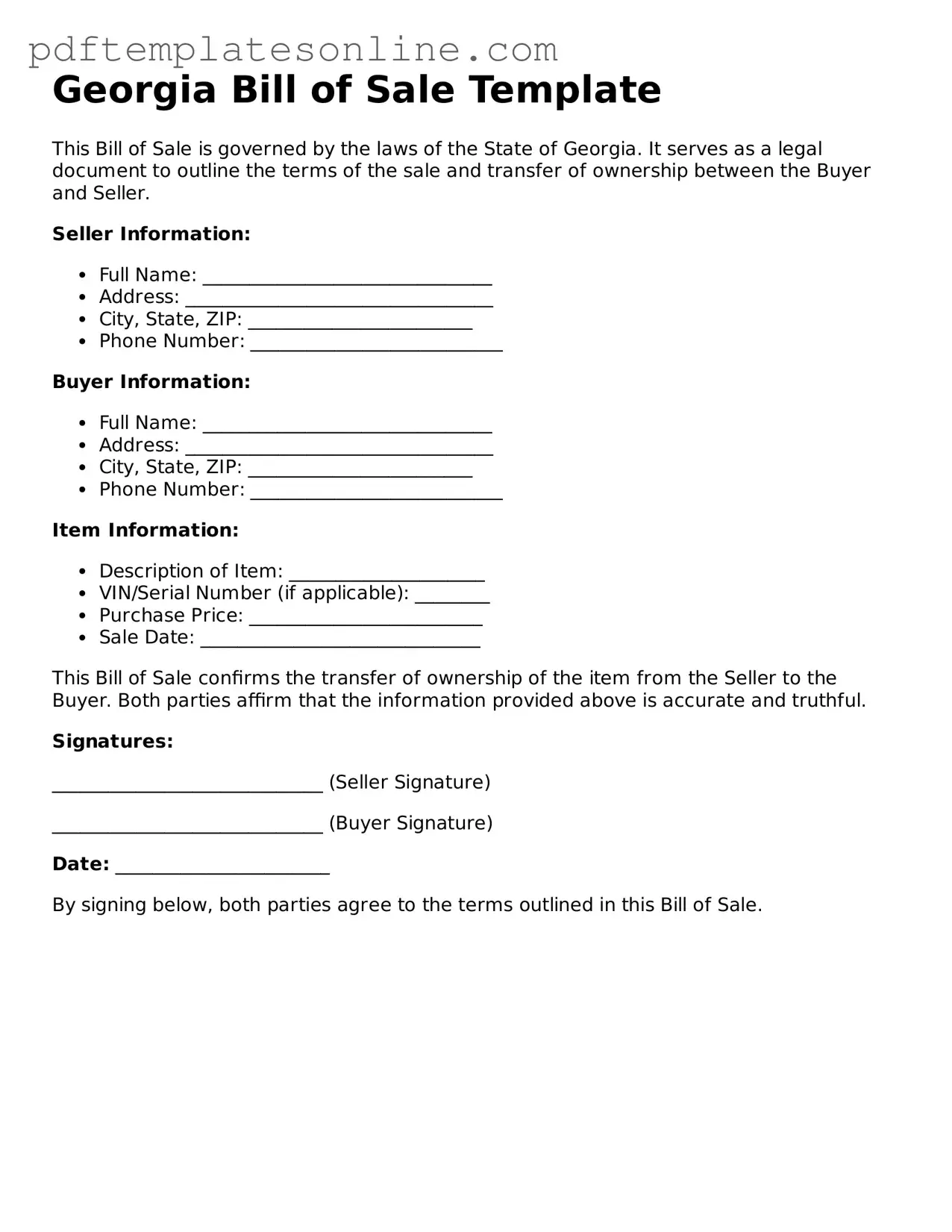Official Georgia Bill of Sale Document
A Georgia Bill of Sale form is a legal document that serves as proof of the transfer of ownership of personal property from one party to another. This form outlines essential details, including the description of the item, the purchase price, and the identities of both the buyer and seller. Understanding the importance of this document is crucial for ensuring a smooth transaction and protecting the rights of all parties involved.
Access Bill of Sale Editor Now
